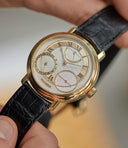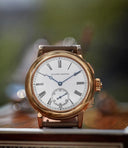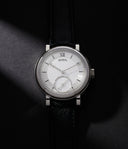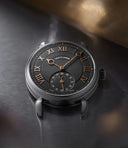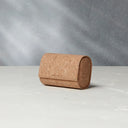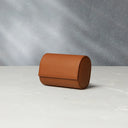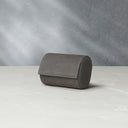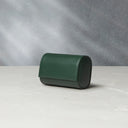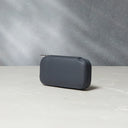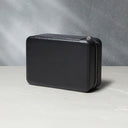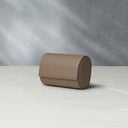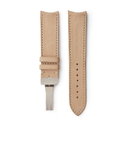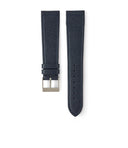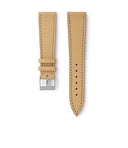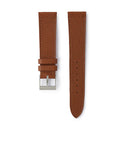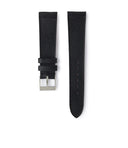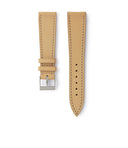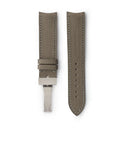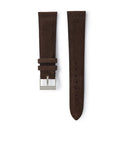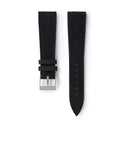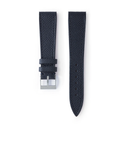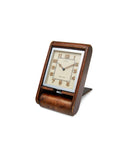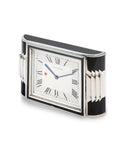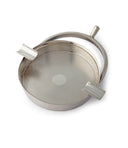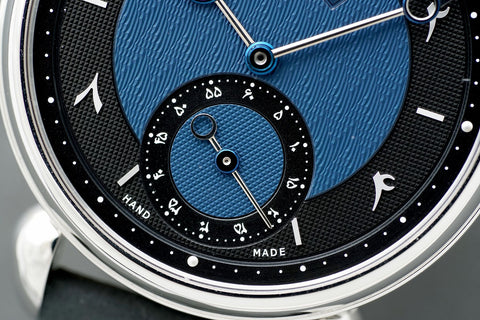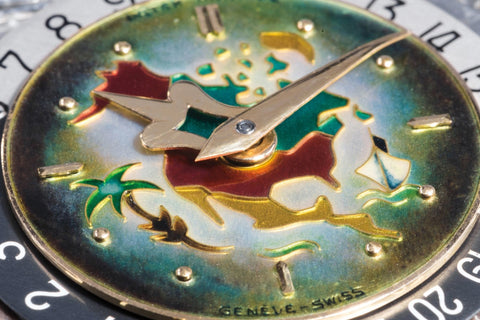

Subtle Complexities: Sylvain Pinaud on Matte Finishing
Kwan Ann Tan
The origin of the “matte” finish we know today is surprisingly modern, and likely has roots in matte painting – a technique used in the 20th century film industry to enhance the appearance of the environment. This finish can influence our perception of colour, as depending on the texture created, the amount of light absorbed can deliver a range of effects, from a muted dark texture to a softer sparkling surface. A variety of matte finishes can be found throughout Sylvain Pinaud’s Origine Pièce Unique, and in this article, we survey the dial’s expanse to consider a technical and aesthetic approach to the use of matte on this piece.
The dial of the Origine is constructed from seven individual elements, encompassing the layered structure of the piece. According to Pinaud, there is a significant amount of skill involved, to the point where several of their own tools and processes – understandably, trade secrets – had to be invented from scratch, in order to coax out the different effects for each component. For example, while the top and bottom bridges seen through the sapphire caseback might appear to be created from two different types of metal, this is in fact the result of the two types of finishing applied, making one appear denser than the other.


Giving us some insight into the piece’s creation, Pinaud says: “Each component is wafer-thin, fragile, and demands an extraordinary level of delicacy. From the first cut to the final assembly, every step becomes a matter of balance, patience and craftsmanship. These dials are unforgiving, the slightest flaw is magnified once the surface is plated, varnished or coated.”
This restrained appearance is balanced by the warmth of the rose gold toned bridges and reinforced through other aspects like the differing shades of grey used across both dial and case. If we take a loupe to the surface of the watch, it’s clear that alongside the beautifully hand-bevelled and surface treatments, this unique Origine is an intriguing combination of textures, with differences even between the types of matte finish – one type on the escapement bridges, and another for the main body of the dial.
“These dials are unforgiving, the slightest flaw is magnified once the surface is plated, varnished or coated.”


Vivid textures evident across both dial and movement.
Pinaud explains, “On the escapement bridges, the finish is achieved through an extremely fine and slightly unusual hand-graining technique. The goal is to obtain a matte surface that diffuses light without revealing a visible grain, a subtle, soft texture, almost like the effect of tracing paper. It takes precise control and gradual progression through abrasives to achieve this finish without leaving marks or scratches.”
He chose to use a rather different approach to the main dial, combining circular finishing with a matte effect. This produces a softer touch that highlights the polished edges, with a lighter appearance compared to its deeper grey edges. When asked why he chose this technique, Pinaud said, “Circular brushing gives the surface depth and movement, while the matte treatment softens the reflections. But finding a way to preserve both required a lot of experimentation. I’m simply drawn to the look, it’s classic without feeling outdated. When the watch has a fairly restrained design in terms of color and shape, adding texture to the dial becomes a way to give it more presence. It plays with light in a unique way, complementing the reflections created by the anglage and black-polished components.”




The appearance of the circular brushing is incredibly even, reminiscent of the growth rings in a tree trunk.
Pinaud goes on to explain the technique: “Circular brushing itself is not complicated: it’s a single operation performed on a lathe using abrasives. But its simplicity is deceptive: the final result depends entirely on the precision of your hand, the evenness of your pressure, and the consistency of your movement. That’s also what gives it its charm.
Traditional hand-graining wasn’t suitable here, as it would have erased the brushed lines. Instead, we explored ways to gently project abrasives onto the surface, keeping the pattern intact while creating a soft, matte texture. Brushing tends to bring out shine, while blasting can erase too much detail — so the key was to find the right material and technique that struck the right balance.”
“While the watch has a fairly restrained design in terms of color and shape, adding texture to the dial becomes a way to give it more presence.”


It's intriguing that despite the many different types and methods of achieving matte finishing that exist, it’s also how the elements on the dial come together that have to be considered. When compared to Pinaud’s first iteration, we see that both watches express the same aesthetic through different means. The original configuration emphasises the overall design while the matte finishing on the unique piece absorbs the light, creating a soft palette that calls attention to the shape of the components, highlighting the curves and angles in a restrained fashion.
As Pinaud mentions, “After many trials, we achieved a result that we’re very proud of – a dial that is clearly matte, yet still responds to light in a refined and elegant way.”
Our thanks to Sylvain Pinaud for sharing his process and techniques with us.




























































































